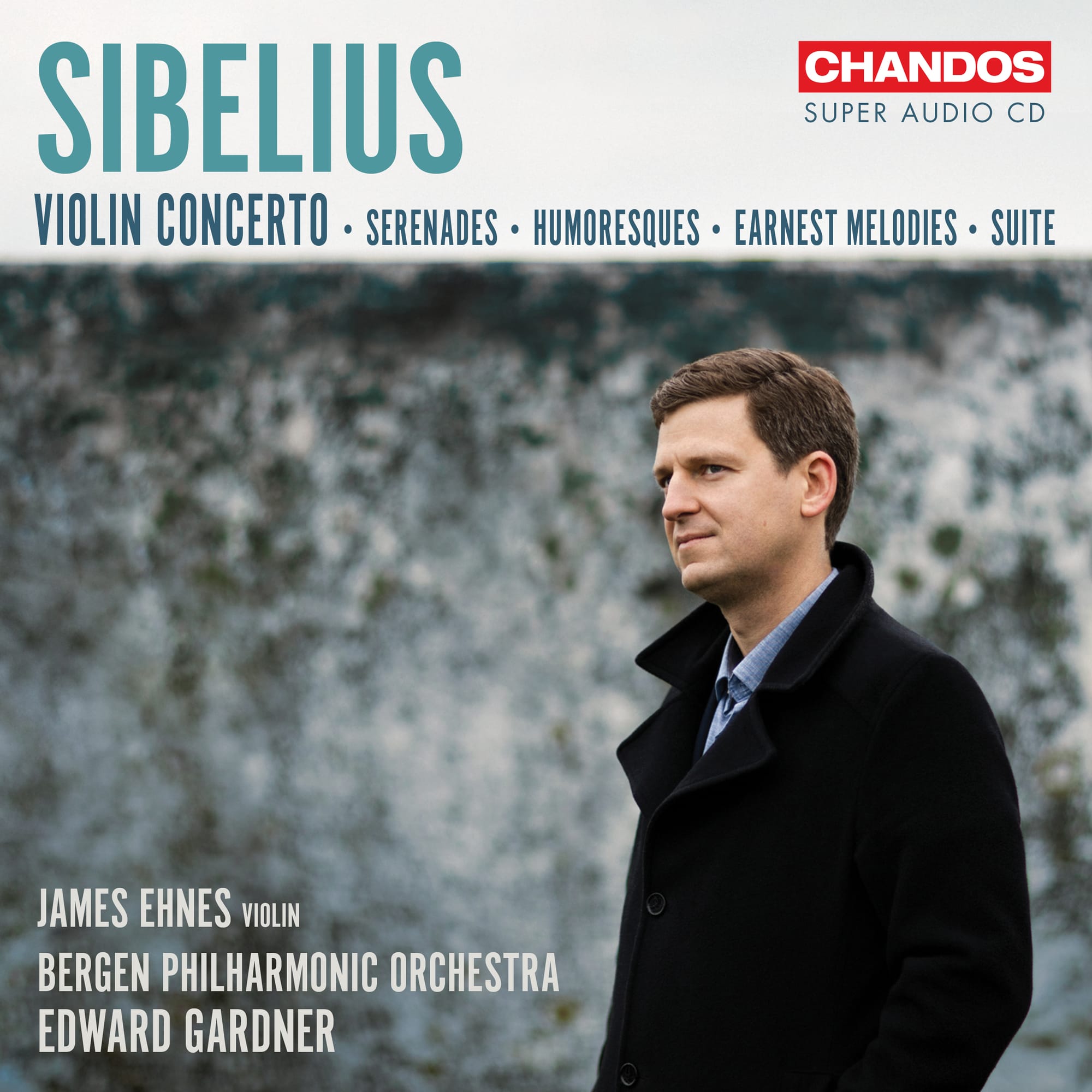James Ehnes returns in Sibelius Violin Concerto
Violinist James Ehnes in exceptional form in music both familiar and unfamiliar

Here's the company intro to this disc:
Sibelius studied the violin in his youth, and actively entertained the prospect of a career as a professional violinist for much of his student life. After graduating from the Helsinki Music Institute, in 1890, he went to Vienna to continue his studies, and while there he even auditioned (unsuccessfully) for a place in the Vienna Philharmonic Orchestra. So, it comes as no surprise that the instrument plays an important place in his compositional output. What might be surprising is that he wrote only one concerto –this might perhaps be due to the difficult conception of the work. The first performance received mixed reviews, and led to extensive revision of the score. It was only when Jascha Heifetz in the 1930s started to perform the concerto regularly that it gained its place in the standard repertoire. Although there was no second concerto, Sibelius’s numerous other works for violin and orchestra are no mere miniatures, as the recordings on this album amply demonstrate. The acclaimed international virtuoso James Ehnes is accompanied here by the Bergen Philharmonic Orchestra, conducted by Edward Gardner.
Emerging from a string tremolo void opening Sibelius' Violin Concerto, Ehnes' searching first line seems like the laying down of a magical thread an endless melody well before Birtwistle, a melding of lyricism and rhythmic mastery that simply draws the listener in. Edward Gardner inspires the Bergen Philharmonic to their finest playing, Ehnes' solo (cadenza or cadenza-like) playing is mesmerising, as far away from mere show as one can get; instead the cadenza proper is like an igniting of previous material, the introduction of the bassoon with its plaintive melody (around 9"30) natural, unforced and perfect.
The woodwind pairs that opens the central Adagio di molto takes us to a crepuscular world of darkly shaded Nordic forest. It is a magnificent exploration through Nature in sound; the finale in contrast dances infectiously (although not without its darker element, too!). Here's that finale:
Apart from its musical excellence, this is also a value-for-money release, coming in at just under 80 minutes. There follows a sequence of six Humoresques , Op. 87 (1917, revised 1940) and Op. 89 (1917/18). Op. 89/1 is a wonderful piece, a sparkling “Alla gavotta,” sitting in stark contrast to an Andantino that in sound world and melodic profile seems so close to the of the Violin Concerto:
And when it comes to the third of Op. 89/3, we ever teh world or Baroque referencing, to fine effect. Ehnes' rhythmmic spring here, too, is most appealing:
The Two Pieces (“Two Earnest Melodies”), Op. 77 of 1914/15 could so easily sound sentimental; Ehnes finds more profound epressio. The first is called “Cantique (Lartare anima mea)” and carries a spiritual radiance in its harmonies:
The second is like an expanded accompanied recitative, ruminative, discursive (“Dévoion: Ab imo pectore”):
There follows the more extended Serenades of Op. 69 (1912/13). They are stunningly beautiful: the first is inspired by a poem, “In an old home,” by Karl August Tavastsjerna and is full of nostalgia; the second is more mysterious:
Finally the short, three movement Suite, Op. 117 (1928/29). The first movement is absolutely delightful. This is one of the last works Sibelius composed before his silence of some 30 years. Here's that first movement:
We have met Ehnes before, and any of the previous releases act as testament to his technique: the live Korngold in Montréal, the disc of Stravinsky I described as a “corker,” plus some terrific Beethoven Sonatas with Andrew Armstrong, that tie on the Onyx label.
This disc is available from Amazon here.

